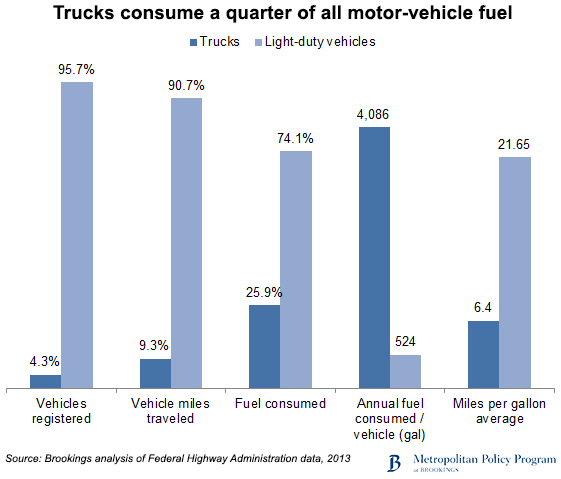In an informative article in Wired, Alex Davies summarizes the Obama administration’s proposed regulations regarding medium- and heavy-duty truck emissions, as well as what the regulations might mean for the future of truck design and technology.
An important component of this story is why addressing trucks’ emissions standards is such a smart, targeted pursuit. As the chart demonstrates, trucks—in this case, vehicles with at least six tires—represent fewer than 5 percent of vehicles on the road but, because they are driven longer distances at lower fuel efficiencies, consume over a quarter of all gasoline. As a result, trucks generate 22 percent of all transportation emissions, far surpassing other industry sectors like aviation, ocean vessels, and rail. Targeting this relatively small group of vehicles can have outsized effects on the country’s environmental health.

Trucking is a great asset to the economy. It moves nearly 70 percent of the country’s goods, equaling trillions of dollars in total trade. The range of designs—from 48-foot rigs to nimble urban delivery vehicles—allows trucks to serve the largest suburban warehouses as well as the most densely packed downtown buildings. These new regulations will make sure trucks can continue to serve American industry but in a more environmentally responsible, fuel-efficient way.



Commentary
Why truck emissions matter
July 6, 2015